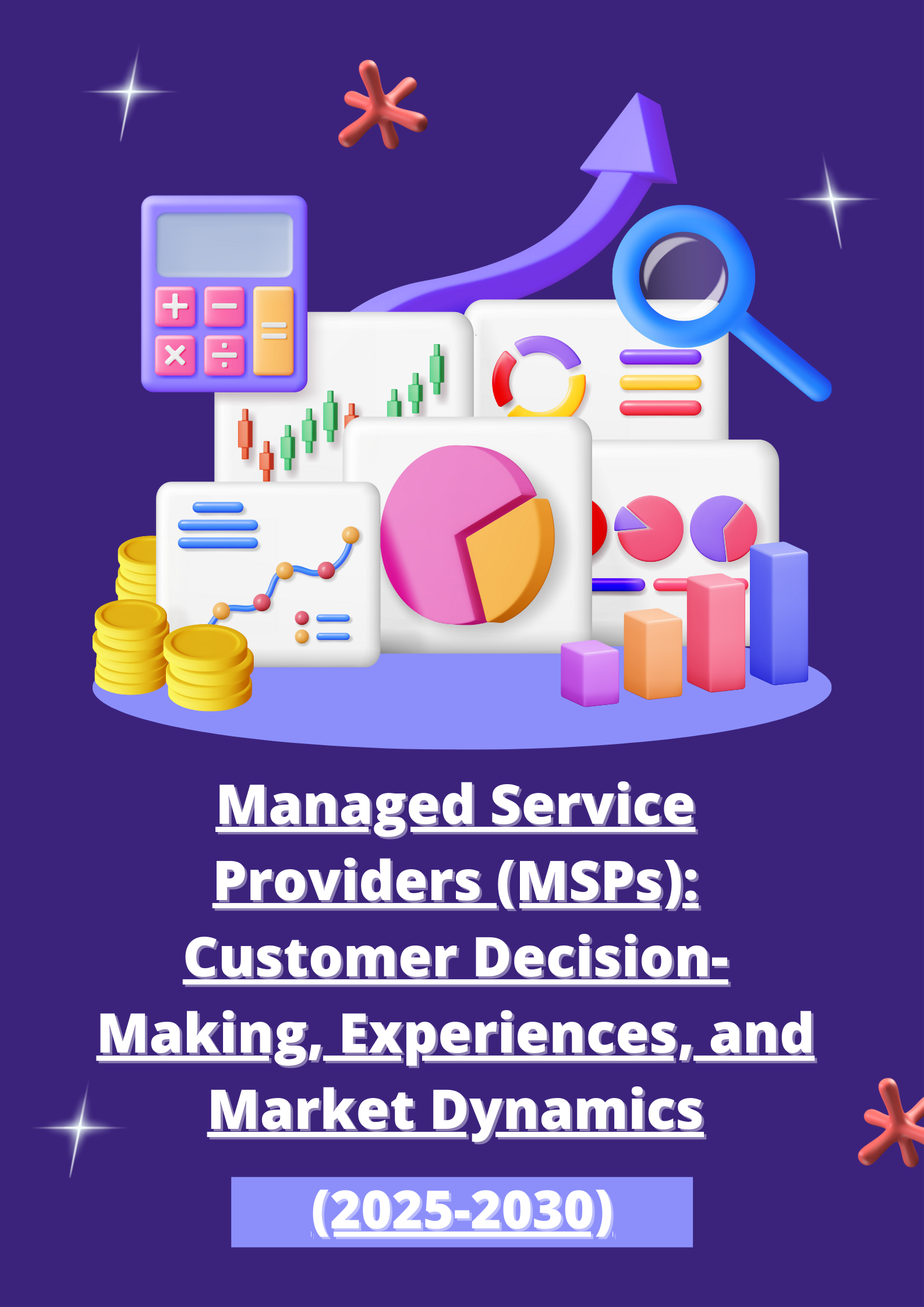1. Executive Summary: The MSP Market Landscape
- Key findings: 70% of enterprises increasing MSP spend by 2025
- Market opportunity: $120B projected growth in the MSP sector by 2030
- Top 5 trends shaping MSP customer preferences and decision-making
2. Overview of the MSP Selection Process
- Typical Stages in MSP Evaluation and Selection: From initial evaluation to final vendor decision
- Timeline for Decision-Making: Average length of time to assess, select, and onboard an MSP
- Case Study: How a mid-sized enterprise streamlined the MSP selection process
3. Decision-Making Roles and Influences
- Key Stakeholders Involved: Roles of IT, procurement, and finance departments
- Role of IT Department vs. Other Business Units: Balancing technical needs with business requirements
- C-Suite Influence: The involvement of CTOs, CIOs, and CFOs in MSP decisions
- Procurement Teams’ Involvement: Negotiating contracts and ensuring compliance
4. Evaluation Criteria for MSP Selection
- Technical Capabilities and Service Offerings: Key services such as cloud, cybersecurity, and network management
- Pricing Models and Cost-Effectiveness: Subscription, usage-based pricing, and TCO considerations
- Scalability and Flexibility: Adapting services to future growth and changing needs
- Security and Compliance Standards: Ensuring data protection and regulatory adherence (GDPR, SOC 2, etc.)
- Industry Expertise and References: Sector-specific capabilities and customer testimonials
- Support Quality and Responsiveness: Evaluating SLAs and customer support performance
- Integration Capabilities with Existing Systems: Compatibility with cloud, ERP, and legacy infrastructure
5. Customer Experience with Key Players (Netrix, 11:11 Systems, TierPoint, Thrive)
- Onboarding and Implementation Process: Speed, ease, and challenges faced during the setup
- Ongoing Support and Communication: Quality of customer support and account management
- Problem Resolution and Escalation Procedures: How efficiently MSPs resolve issues and handle escalations
- Proactive vs. Reactive Service Approach: Monitoring and proactive solutions vs. problem response
- Customization and Flexibility in Service Delivery: Tailoring solutions to unique business needs
- Reporting and Transparency: Frequency, quality, and depth of MSP reports and performance reviews
6. Comparative Analysis of MSP Offerings
- Strengths and Weaknesses of Different MSP Approaches: A comparative look at the top MSPs
- Specializations and Unique Selling Points: Key differentiators among providers
- Pricing and Contract Structure Variations: Comparison of pricing models and contract flexibility
- Geographic Coverage and Support Capabilities: Regional vs. global support models
7. Challenges in MSP Selection and Management
- Aligning MSP Capabilities with Business Needs: Ensuring service offerings match strategic objectives
- Managing Transitions Between Providers: Addressing service continuity and minimizing disruptions
- Ensuring Consistent Service Quality: Maintaining high standards over long-term contracts
- Balancing Cost and Service Level Expectations: Managing expectations and budget constraints
8. Trends Influencing MSP Selection
- Shift Toward Cloud-Native MSP Solutions: Rise in demand for cloud-focused services
- Increasing Focus on Cybersecurity Services: Growing emphasis on data protection and compliance
- Demand for AI and Automation in Managed Services: Incorporating AI-driven monitoring and automation
- Rise of Industry-Specific MSP Offerings: Custom solutions tailored to vertical industries (e.g., healthcare, finance)
9. Best Practices in MSP Engagement
- Developing Comprehensive RFPs: What to include in requests for proposals to MSPs
- Conducting Effective Proof of Concepts (PoCs): How to evaluate MSPs through pilot projects
- Negotiating Flexible and Favorable Contracts: Securing competitive terms, SLAs, and scalability options
- Establishing Clear SLAs and KPIs: Key performance indicators to monitor MSP performance
- Regular Performance Reviews and Optimization: Best practices for continuous service improvement
10. Lessons Learned from MSP Implementations
- Common Pitfalls to Avoid: Mistakes organizations make when selecting or managing MSPs
- Strategies for Successful MSP Partnerships: Building long-term, value-driven relationships with providers
- Maximizing ROI from MSP Engagements: Ensuring a strong return on investment in managed services
11. Future Outlook for MSP Selection
- Anticipated Changes in MSP Selection Criteria: How evolving technology and business needs will shift priorities
- Emerging Technologies Likely to Impact MSP Offerings: The role of edge computing, 5G, and quantum computing in future MSP services
- Predictions for MSP Market Evolution (2025-2030): Future trends in pricing models, vendor specialization, and service innovation
12. Conclusion
- Key Takeaways: Summary of critical factors in selecting and managing MSPs
- Strategic Recommendations for IT Buyers: How to choose the right MSP and optimize the relationship for long-term success
#ManagedServiceProviders #MSPSelection #CloudServices #Cybersecurity #NetworkManagement #AIinMSP #ITProcurement #ITDecisionMaking #MSPTrends #MSPMarketGrowth #CIO #CFO #CTO #DigitalTransformation #CloudNativeMSP #ITInfrastructure #SLA #CustomerSupport







